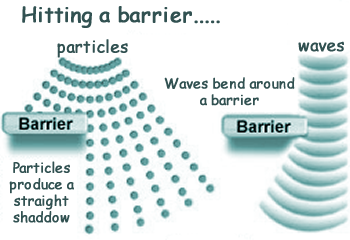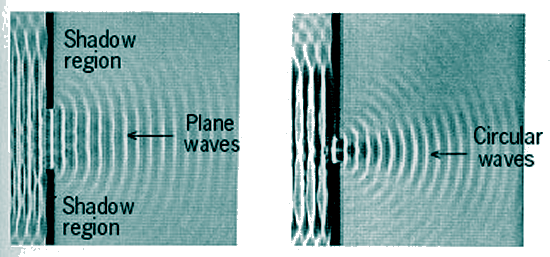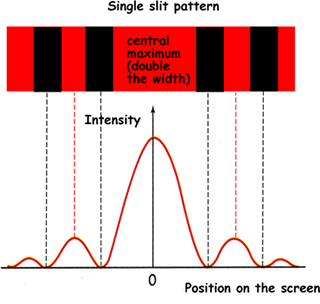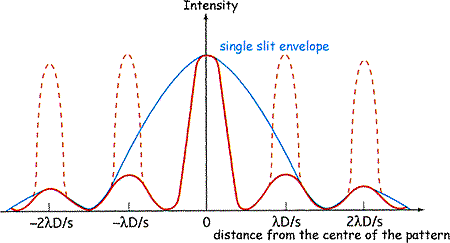Diffraction at A Level Diffraction is the spreading of waves when they pass through a gap or by an edge. Particles would not do that so diffraction is evidence of the wave nature of light. Click here for the GCSE page. This general property of all waves is very important in the design of optical instruments, such as cameras, microscopes and telescopes. For example, when a telescope is used to observe planets, we can often see features that are not evident when observed directly. This is partly because less diffraction occurs when waves pass through a wide gap than through a narrow gap. Therefore, because a telescope is much wider than the eye pupil, much less diffraction occurs when using a telescope than when observing with the unaided eye.
Diffraction of water waves through a gap can be observed using a ripple tank. This arrangement shows that the diffracted waves become more circular if:
Close examination of the diffracted waves reveals that the each diffracted wavefront has breaks either side of the centre. These breaks are due to waves diffracted by adjacent sections on the gap being out of phase and cancelling each other out in certain directions. Diffraction of light by a single slit can be demonstrated by directing a parallel beam of light at the slit (a laser is good to use). The diffracted light forms a pattern that can be observed on a white screen. You see 'fringes' - bands of light (which from a laser are red) and no light (which on the diagram are shown in black.
The pattern shows a central bright fringe with further dark and bright fringes either side. The intensity of the fringes is greatest at the centre of the central fringe. The central fringe is twice as wide as the others. NOTE
If the single slit pattern is observed:
It can be shown theoretically that using light of wavelength Wc = 2D(
Questions
|
Follow me...
|










